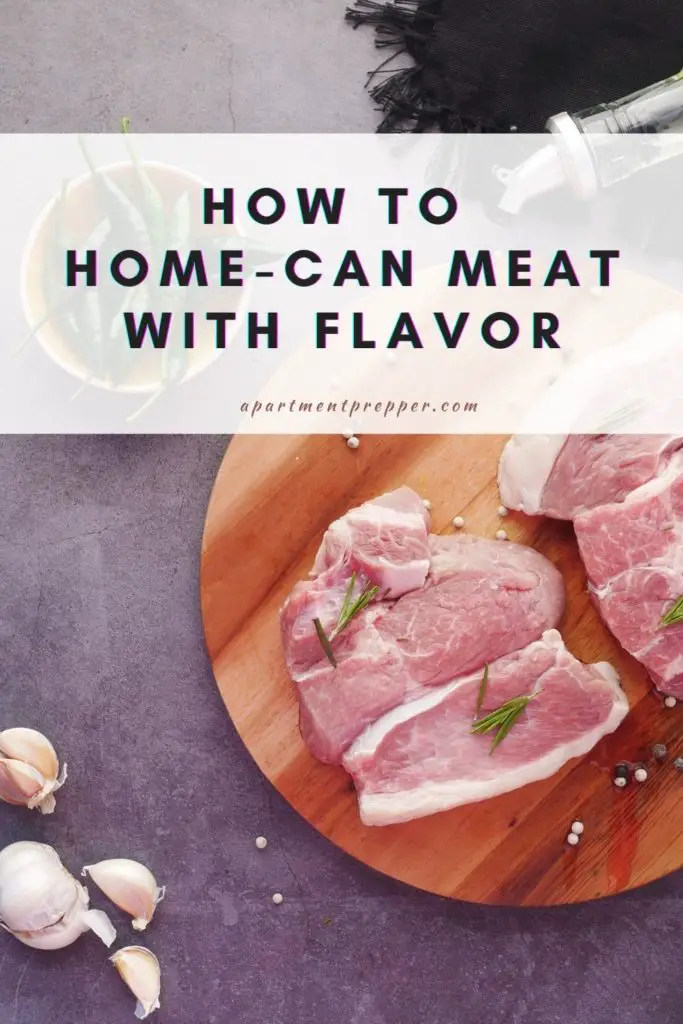Written by Ron Brown
I’ve gardened for years and canned for years and have several times tried to home-can meat using a pressure canner. FAIL. The recipes I used all came from online or old cookbooks or the advice of friends. Yuck.
This year, with Ukraine and inflation and food shortages on the horizon, I thought once again of the desirability of home-canning some meat. A month ago we had a power outage for two days and I was really worried about the meat in the freezer. And I read tonight that the authorities are concerned about rolling blackouts later this summer right here in the good ol’ USA.
Plus I had an epiphany a couple of weeks ago. Why not fully cook and season some meat BEFORE canning? Wouldn’t the flavor come through? And I found an additional suggestion online that you should can meat with broth and not just cover it with water in the jar. You can make broth yourself; there are instructional how-to videos on YouTube. But you can also buy broth, ready-made, in the grocery store.
So why not? Would it work? And the answer, I’m happy to announce, is YES. It will work.
So here I’m going to provide you with a recipe along with some canning instructions.
If you search Google, everyone tells you that home-canned meat tastes better store-bought. Really? How can I break this to you gently? These folks lie like a rug — 99.9% of home-canned meat is truly blah stuff. Taste-wise, even Spam and canned corn beef outperform it. Surely we can do better.
First, the recipe . . .
Philippine Adobo Recipe
My wife is from the Philippines. They have a dish called adobo (ah-DOUGH-bow). But that’s really a very general term. How many different kinds of “stew” are there? Ditto for adobo.
My wife starts with a pork shoulder, one of the cheapest cuts of pork. And she uses skinless. She doesn’t try and cook the skin. She carves all the raw meat off the bones and cuts it into fairly small pieces. It contains a fair amount of fat. She keeps the fat. That’s where the flavor is.
One pork shoulder weighs about 4 lbs. and costs $1.99 a pound (on sale). So one shoulder costs $8 and fills 4 pint jars. With just she and I in the house, one jar makes two meals. Eight dollars for eight meals. Is that a bargain? Your call.
After cutting the meat off the bones, she marinates it for an hour (minimum; overnight is better) in a 50/50 mix of soy sauce and lemon juice. One shoulder takes half a cup of soy sauce and half a cup of lemon juice. (Vinegar can be substituted for the lemon juice.)
In addition to soy sauce and lemon juice, the marinade also contains garlic (crushed cloves), chopped ginger root, ground black pepper, and one tablespoon of oyster sauce. Onion powder is optional. More adventurous folks add chili flakes or cayenne pepper.
After marination, the cooking process starts with sautéing some crushed garlic cloves and chopped onion in vegetable oil. When the garlic and onion turn brown (begin to caramelize), the marinated meat (including all the juice) is added. And some bay leaves are added. It’s all mixed together, covered, simmered till tender, and salted to taste. At the end of cooking, some sliced raw onion is added.
The adobo can be thinned with broth or thickened with corn starch. It can be cooked down until there is no gravy at all or cooking can be halted to leave some gravy to spoon into the canning jars.
Pressure Canning
Meat must be pressure canned.
Use pint jars. Fill the jars leaving one full inch of headspace. If there is not enough cooking liquid to fill the jars, use broth (for flavor) in preference to water. Wipe the lips (edges) of the jars to remove all food particles.
Put the lids on the jars then screw down the rings snug (but not tight) to hold the lids in place. Pressure must escape from the jar. If screwed on too tightly the lids will buckle and/or the glass jar will break.
Put the jars in the pressure canner plus enough water to come 3 inches up the sides of the jars.
Put the top on the canner and turn on the heat. When the water inside the canner begins to boil, steam will exit the steam vent (a.k.a. vent pipe). I let the boiling-and-steaming continue for 3 minutes before installing the steam regulator on the vent pipe. I want the water in the canner, the jars, and the contents of the jars to all be equal (at boiling temperature) before introducing pressure.
Put the pressure regulator on the vent pipe. Process the pint jars at 15 lbs. pressure for 75 minutes (one hour and a quarter). The 75 minutes of processing time begins when pressure first reaches 15 lbs.
If the pressure gauge reads higher than 15 lbs., turn down the heat under the canner.
At the end of the time (75 minutes), turn off the heat and let the canner cool down naturally. Don’t spray it with water to hurry it along. This is the part of the process with pressure canning where bad things happen. Be patient. It takes at least half an hour (at room temperature) for the canner to cool to the point where the lid can be safely removed.
And then?
That’s an easy one. Enjoy.
About the Author
I’m a retired engineer. I live in the countryside in upstate New York (not to be confused with New York City). My only real claim to fame is a series of eight books on Amazon entitled “The Non-Electric Lighting Series.” Each book in the series is available in both Kindle and paper format. The series has been well received. Whenever I’m feeling sorry for myself I review the readers’ comments. And I always come away smiling. Gee, maybe I’m not such a bad guy after all.
We are an affiliate of Amazon.com, which means we received a small commission if you click through one of our Amazon links when you shop, at totally no cost to you. This helps keep the lights on at the blog. Thanks!
Photo credit: https://unsplash.com/@towfiqu999999




Chicken, I’ve discovered, can be pressure-canned in exactly the same way as pork. But it needs to be boneless. So cut the meat off the bones if it comes bone-in. Keep the skin on the meat to be canned but discard lumps of fat (that the grocery store may include to bump up the weight of the package). Also, please know that chicken and pork can be mixed in the same canning jar.
Good to know Ron! I never would have thought you can mix chicken and pork in the same canning jar. Thanks for your guest post and tips!